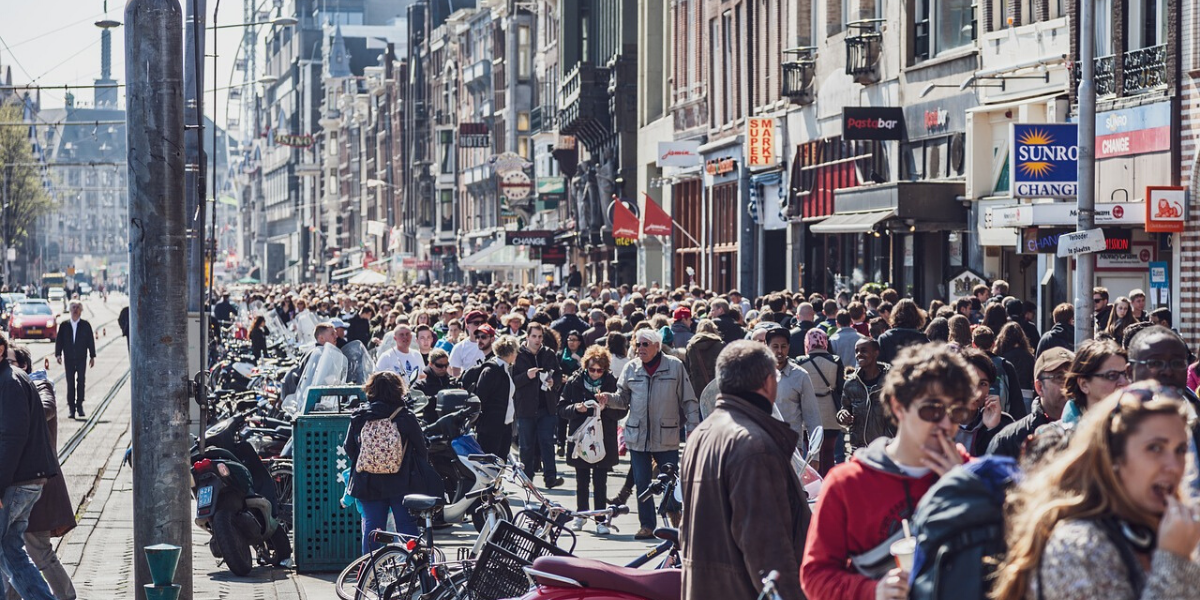
 https://f.hubspotusercontent00.net/hubfs/5705202/Blog/Blog%20Bild%20Overtourism-2.png
https://f.hubspotusercontent00.net/hubfs/5705202/Blog/Blog%20Bild%20Overtourism-2.png
Eric
Junior Marketing Manager
February 6, 2020
Hotel trends
The danger of overtourism for destinations
Each year new records are set worldwide in terms of visitor numbers - tourism is booming. In many cities and regions people are already talking about overtourism and those who are actively involved are looking for promising countermeasures. Not only cities such as Venice or Barcelona are affected, but also alpine regions are confronted with overcrowding.

Popular destinations are increasingly suffering from congestion. The advancing technological developments are increasingly influencing the development of tourism, especially social media and online booking platforms contribute to this change. Travelling has become more affordable, with low-cost airlines and car rentals, distances can be covered more economically. At the same time, an economic boom is taking place in many countries, encouraging the growing middle class to travel.
Tourism destinations are experiencing an upswing, and within the regions, new records are being set for the number of visitors and overnight stays, which profits many inhabitants. However, tourism can also lead to problems because of the enormous amount of tourists. Due to a change in the attitude of the locals towards tourism, conflicts are increasing - the initiative of the destinations is demanded.
The big players of overtourism
Not all internationally popular destinations are necessarily affected by overtourism, but everyone knows Venice, Barcelona, Paris, Amsterdam and Dubrovnik. The similarity? They all struggle with the problem that the volume of tourists is hardly sustainable for a longer period of time in comparison to the available space.
Approximately 30 million people visit Venice every year - compared to the 50.000 locals in the historical centre, that is almost two tourists per day for each inhabitant. The biggest challenge for the city are the day tourists, they do not generate overnight stays, often spend only a few hours at the city’s hotspots and hardly generate any added value.
In Dubrovnik, a port city in the south of Croatia, a large number of cruise ships arrive daily. Especially since the series “Game of Thrones”, the city has experienced a strong increase in tourists. Around two million people visit Dubrovnik every year and among other things, they want to see the old town which is only 400 by 300 meter.
Another affected area is Palma de Mallorca, many know it as a party island. A quarter of property purchases on the island are registered as secondary residences. This effect increases rents by up to 50% and purchase prices by up to 20%. The problems of mass tourism are noticeable particularly during the summer months of June, July and August, when more than half of the 12 million annual tourists visit the island. In contrast to the big players, destinations in the alpine region usually do not generate tourist numbers in the double digit million range, but in a place like Hallstatt, even a fraction is enough to call it overtourism.
But when is it too much?
Overtourism is a phenomenon when too many tourists visit a geographically limited area at a certain time. There is no definable number for “too many”, as in cities like Barcelona, 1.000 tourists have less of an impact than in a small provincial village. In general, overtourism is defined by the attitude of the local population. Depending on the number of inhabitants, the available space and the distribution of tourists, different hotspots arise. These often affect the inhabitants of a city in their everyday activities and cause a negative attitude towards tourists. The following applies: Overtourism depends strongly on the acceptance by the local population.
Overtourism can also be identified by inspecting the increase in rental fees within a defined area, when they are no longer affordable for a large part of the population. This in turn influences the view on tourism by the locals. It is also important to note that too many tourists do not only have an impact on the lives of the local people, but also negatively affect the holiday experience of other visitors.
Causes of overtourism
Especially through social media and influencers, previous insider tips are now made accessible to the whole world. Often these places become famous overnight and are not equipped for such an onslaught. Platforms like tripadvisor guide tourists to the “most beautiful sights” within a destination and contribute to the creation of hotspots.
Shopping in local stores, consuming regional food and discovering the secret beaches - travellers increasingly feel the need to immerse themselves in the way of life of the inhabitants and experience the region as a local. In search of exclusivity and something special, unspoiled retreats of the local population are increasingly overcrowded. Former insider tips become generally known tourist attractions.
Another challenge for destinations are day tourists, who spend only one day within a city in large numbers. In contrast to overnight guests, they spend considerably less money, yet resources are used at the same extent and the visitor frequency of the attractions increases drastically. One of the reasons for this development are the cruise ships, because their guests often only have a few hours to visit all the attractions.
Measures taken by the destinations
The most important factors in overtourism are both the satisfaction of the locals and the quality of the destination itself. In order to fulfill the expectations of the local population and to remain competitive, an active dialogue with the involved parties should be sought.
Technological developments can be used as an opportunity to distribute guest flows better. A possibility would be the equalisation of the guest flows by extending the high season or by encouraging tourists to visit the destination during the low season through attractive offers.
A further measure, which has already been implemented or discussed frequently, is the introduction of upper limits and access restrictions to tourist hotspots. The framework conditions of this method have to be correlated with the ecological and social capacity of a destination
Another concept that has already been implemented in Mallorca is the introduction of a so called eco-tax, which has to be paid per night during their stay - this also applies to tourists of cruise ships. Mallorca has not seen a significant decrease in the number of tourists since the introduction of the tax, but the additional income of 128 million euros will be invested in agricultural, environmental and monumental protection. Venice is pursuing a similar concept, adapted to the problem of day tourists, and plans to introduce entrance fees for the city centre.
Do you want to adjust your hotel prices perfectly to the increasing streams of tourists? Then book a free DEMO and find out how RateBoard can help you.
SHARE

Subscribe To Our Newsletter
Sign up now and receive monthly hotel and revenue management insights.
